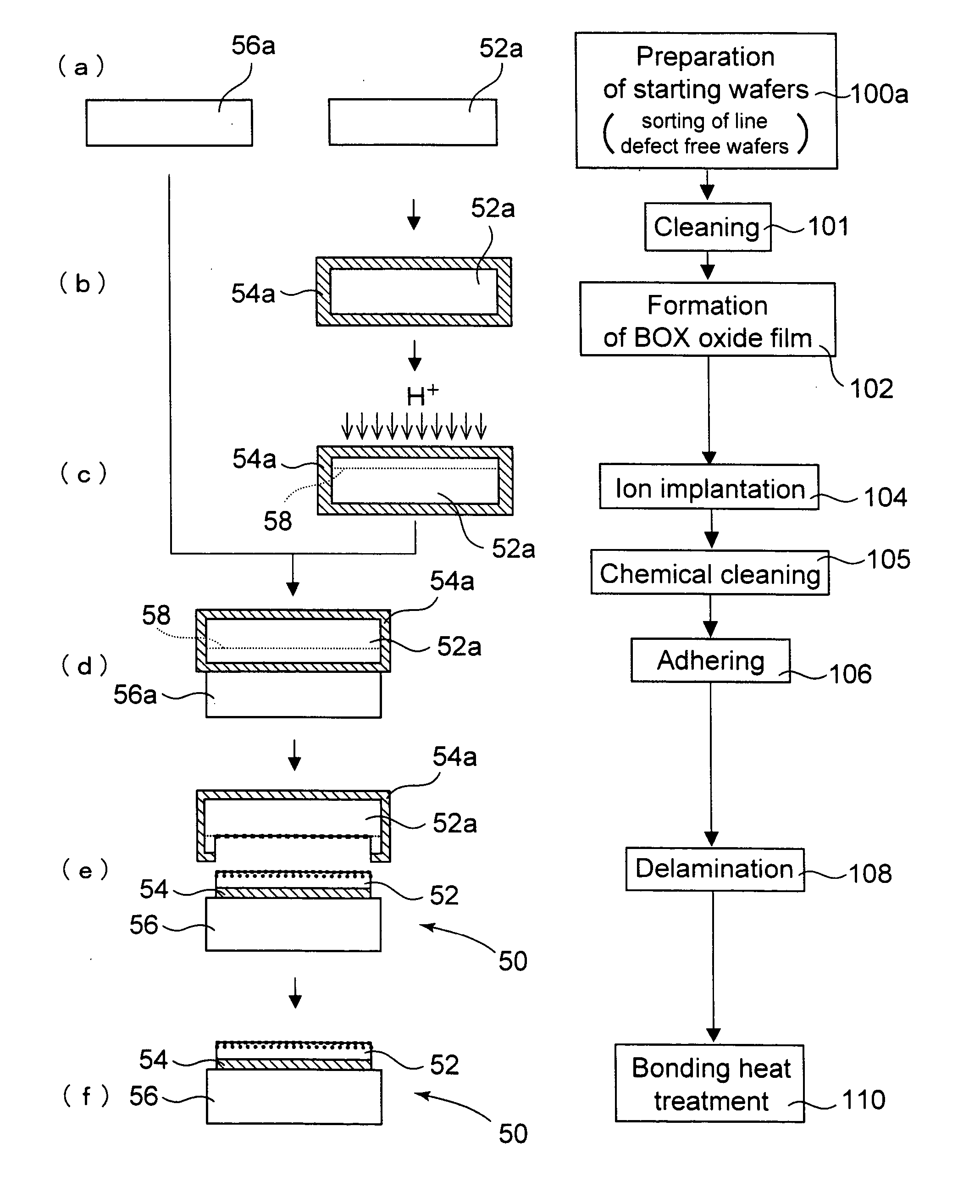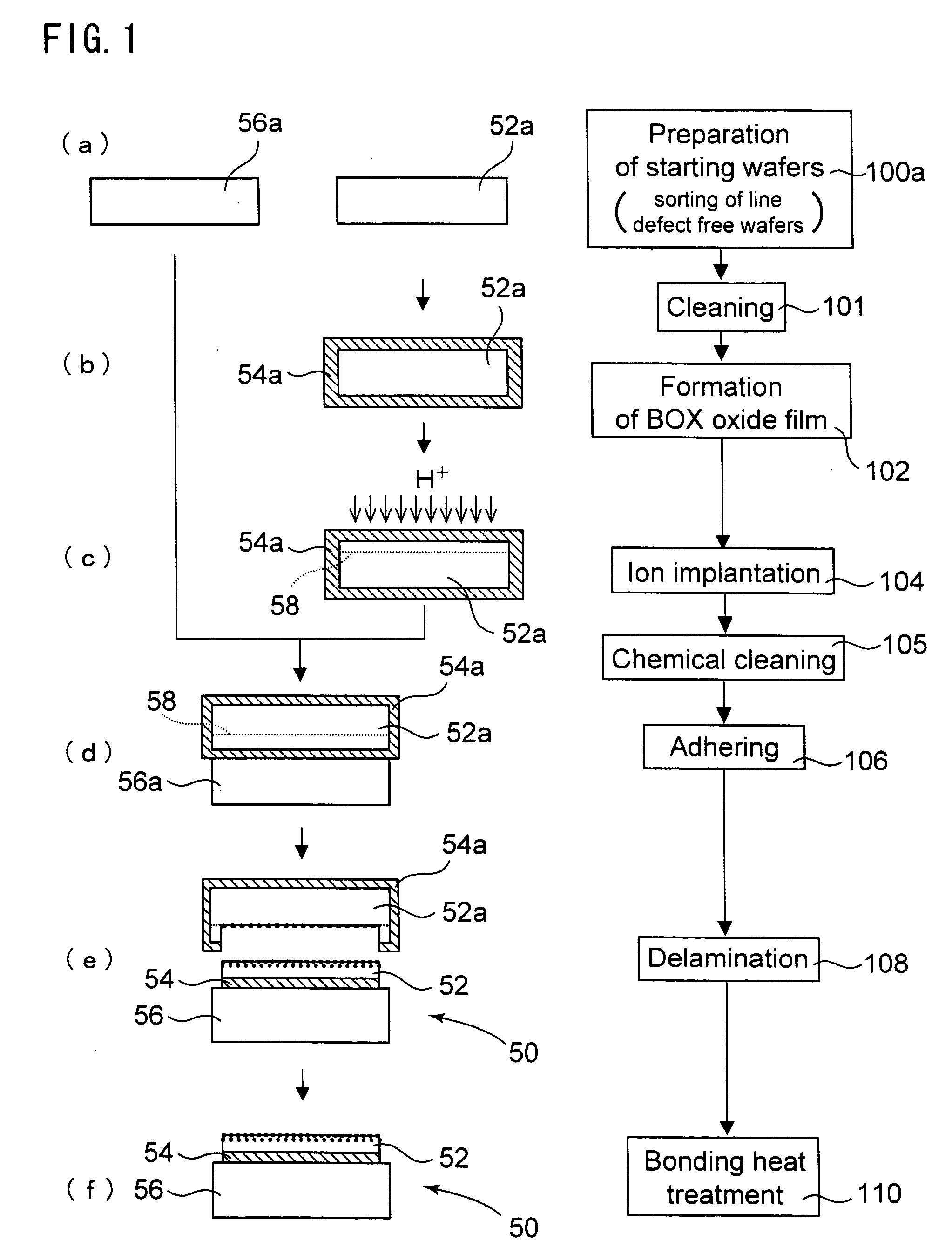Method for manufacturing soi wafer
a technology of silicon on insulator and soi, which is applied in the direction of basic electric elements, electrical apparatus, semiconductor devices, etc., can solve the problems of difficult discrimination, line defect, and problem of problem of line-shaped defect present on the surface of a bond wafer, and achieves stable annihilation, easy annihilation, and reduced generation of voids
- Summary
- Abstract
- Description
- Claims
- Application Information
AI Technical Summary
Benefits of technology
Problems solved by technology
Method used
Image
Examples
experimental example 1
[0054] Description will be given of a conventional method for an SOI wafer below with reference to FIGS. 3 to 5 while schematically showing an influence of a line defect. At first, as a base wafer 56a and a bond wafer 52a, there were prepared p-type mirror-polished silicon wafers each having a diameter of 300 mm, a orientation and a resistivity of 10 Ω·cm manufactured from an ingot grown by a CZ method [FIG. 5(a), step 100]. The starting wafers were wafers on a surface of each of which about 100 line defects were observed. The sizes of the line defects each were 0.5 μm or more in diameter. The line defects were, as shown in FIG. 3, usually observed as a size of the order in the range of from 2 to 3 μm.
[0055] Observation of a line defect was conducted using a laser microscope with a confocal optical system. The laser microscope with a confocal optical system is one manufactured by Lasertech Co. with a trade name of MAGICS.
[0056] With the wafers described above, there was formed an...
example 1
[0061] An SOI wafer 50 was manufactured according to a manufacturing process of a method of the present invention shown in FIG. 2. At first, there were prepared p-type mirror-polished silicon wafers each having a diameter of 200 mm, a orientation and a resistivity of 10 Ω·cm manufactured from an ingot grown by a CZ method [FIG. 2(a-1), step 98].
[0062] The starting wafers were first subjected to high temperature heat treatment [FIG. 2(a-2), step 99]. The high temperature heat treatment was carried out with a vertical heater heating type heat treatment apparatus (a batch furnace) in a 100% argon atmosphere at 1200° C. for 1 hr. In the heat treatment, a temperature rise rate up to 1000° C. was 5° C. / min. and thereafter the rate up to 1200° C. was 2° C. / min., while a temperature fall rate was 2° C. / min.
[0063] Each of the wafer surfaces was inspected on a line defect using a laser microscope with a confocal optical system and absence of a line defect was confirmed on all the wafers. T...
PUM
 Login to View More
Login to View More Abstract
Description
Claims
Application Information
 Login to View More
Login to View More - R&D
- Intellectual Property
- Life Sciences
- Materials
- Tech Scout
- Unparalleled Data Quality
- Higher Quality Content
- 60% Fewer Hallucinations
Browse by: Latest US Patents, China's latest patents, Technical Efficacy Thesaurus, Application Domain, Technology Topic, Popular Technical Reports.
© 2025 PatSnap. All rights reserved.Legal|Privacy policy|Modern Slavery Act Transparency Statement|Sitemap|About US| Contact US: help@patsnap.com



